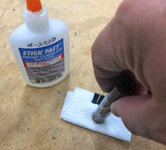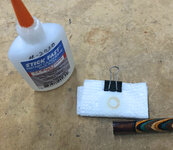milothemeanie
Member
I have been trying to create pen blanks with tobacco paper from a cigar along with its band. I have been having this recurring problem where grey areas appear only when I either start barrel trimming or start turning the blank. Is it moisture, the sealant I am using, or the fact I am not using a pressure pot?
I have tried each of the following combinations:
Resin: PR, Amazing Deep pour epoxy
Adhesive: CA glue, 3M Super 77 Spray adhesive, Elmer's glue stick
Sealant: Modge Podge , Crystal Clear Acrylic Coating 1303
I have had one success but couldn't replicate the results with the combination of Amazing Deep Pour Epoxy, 3M Super 77 Spray Adhesive, Crystal Clear Acrylic Coating 1303.
Below are the results, any help is appreicated



I have tried each of the following combinations:
Resin: PR, Amazing Deep pour epoxy
Adhesive: CA glue, 3M Super 77 Spray adhesive, Elmer's glue stick
Sealant: Modge Podge , Crystal Clear Acrylic Coating 1303
I have had one success but couldn't replicate the results with the combination of Amazing Deep Pour Epoxy, 3M Super 77 Spray Adhesive, Crystal Clear Acrylic Coating 1303.
Below are the results, any help is appreicated



